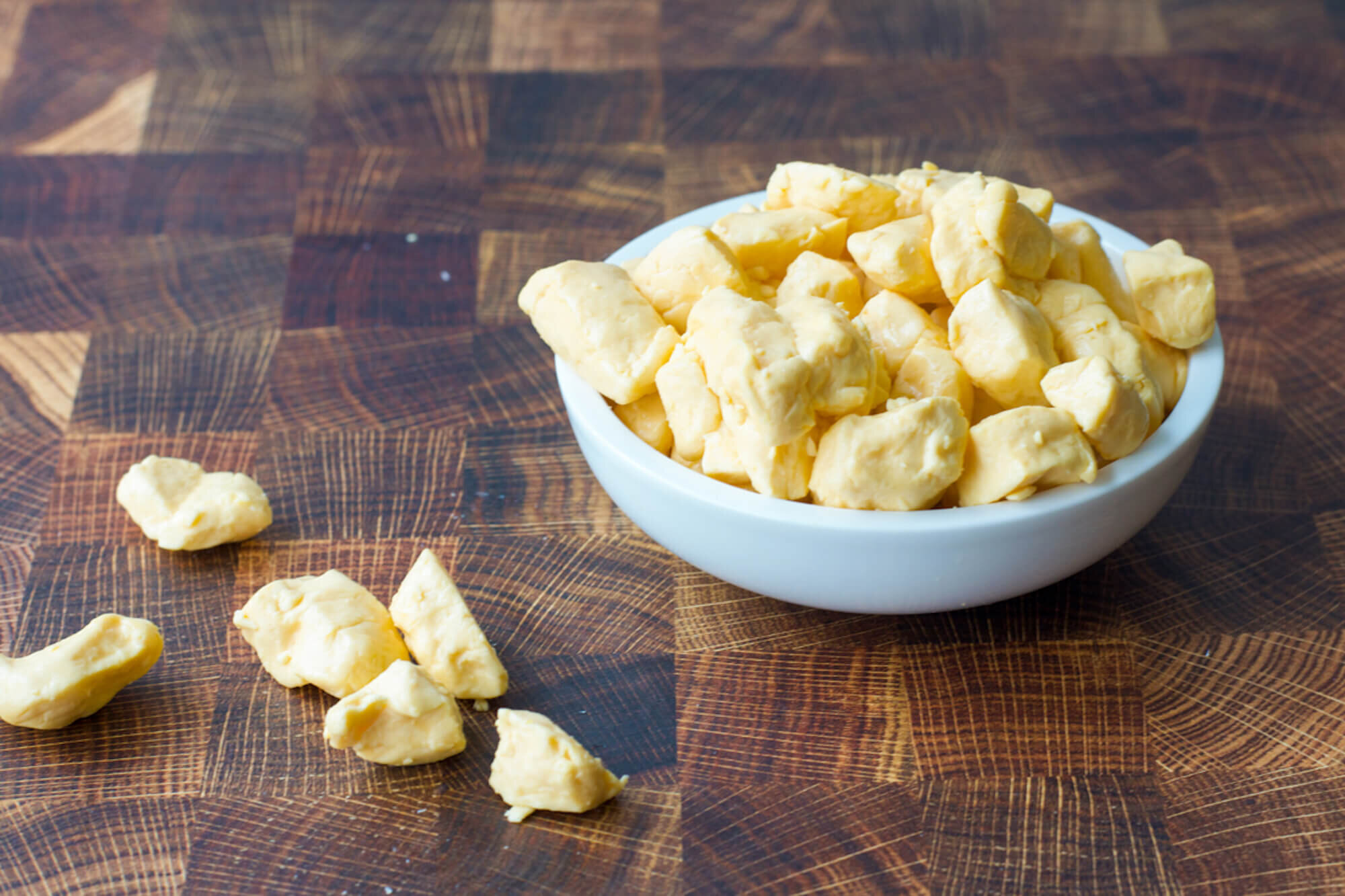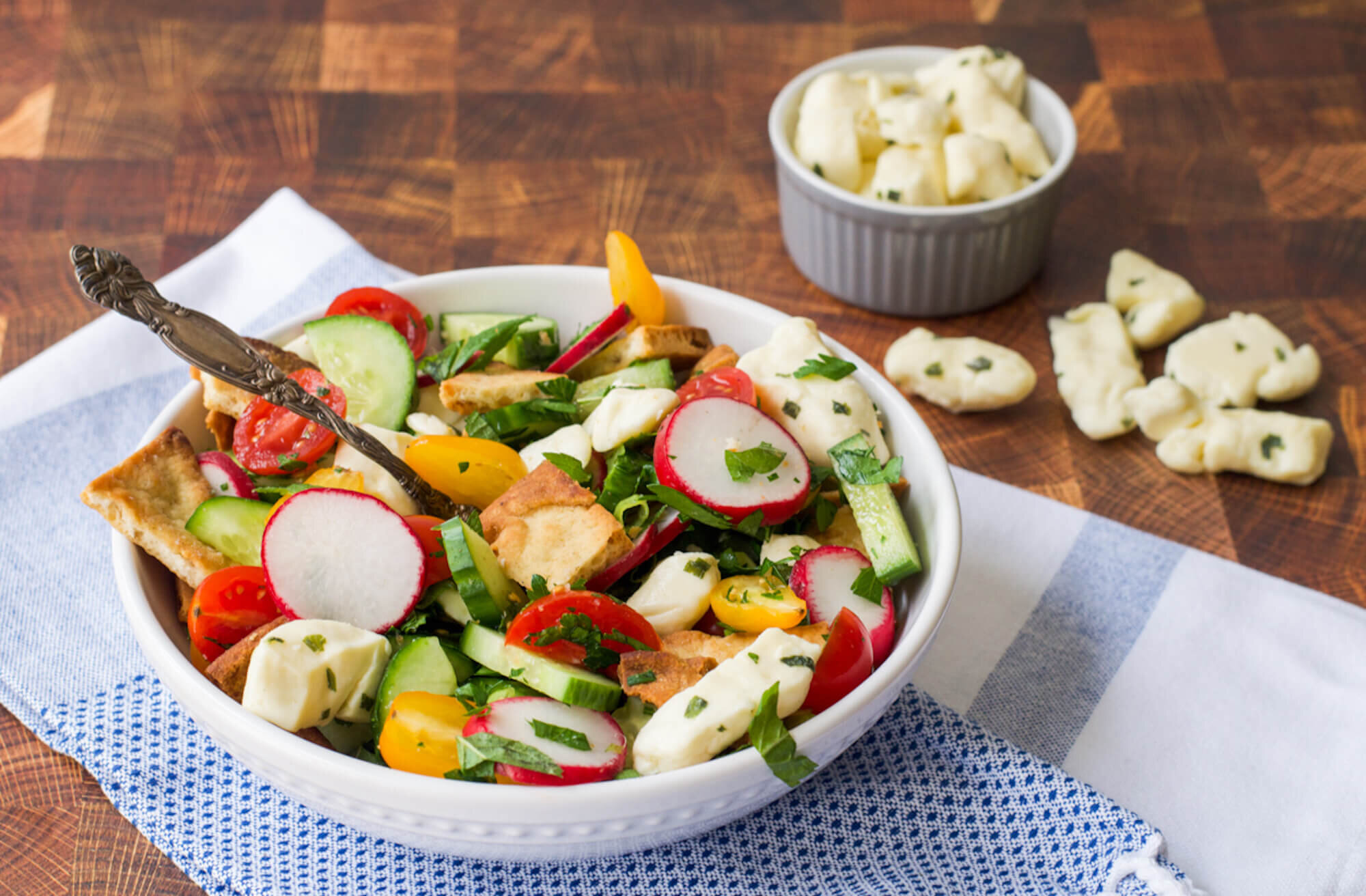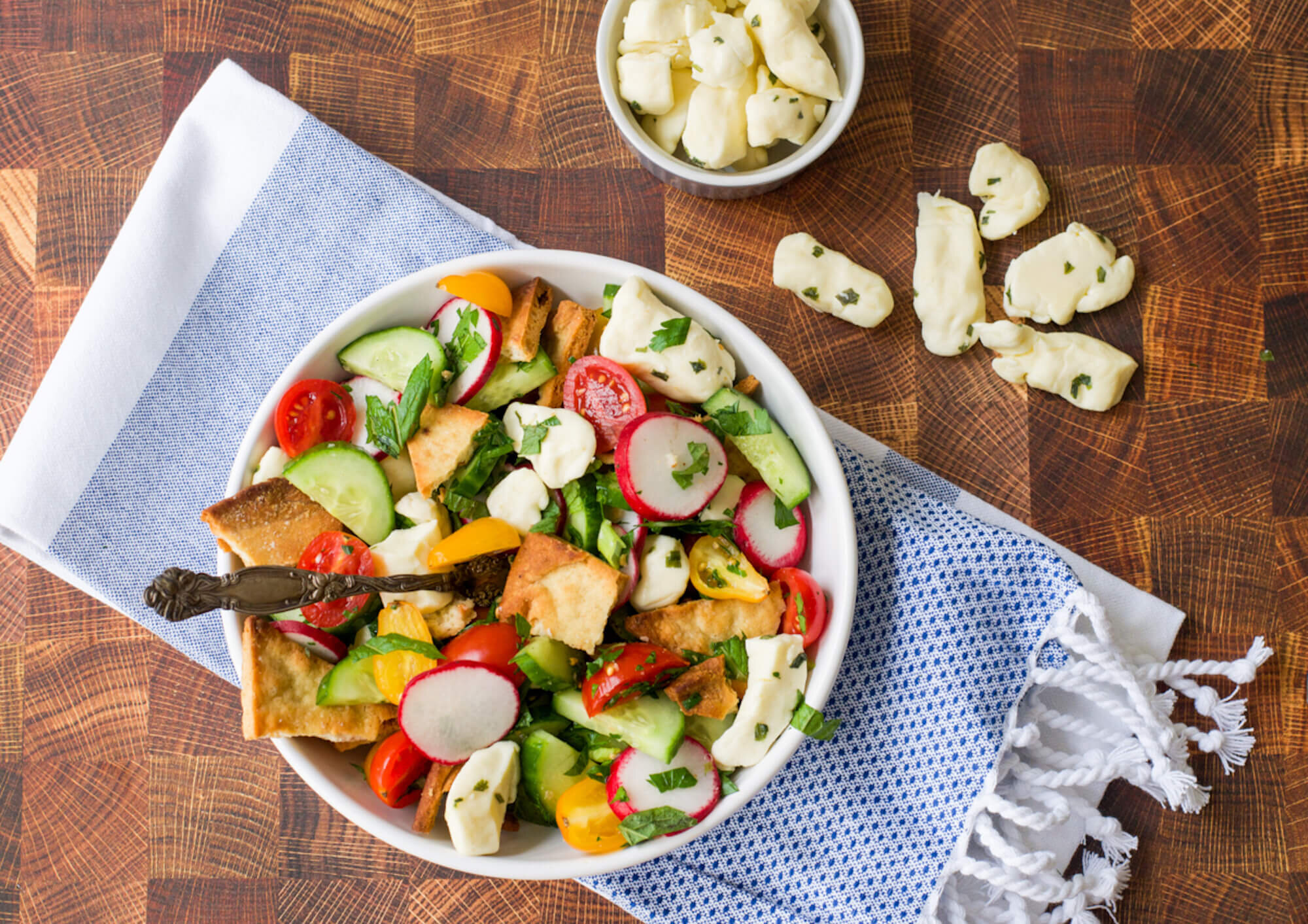Cocktails, Salads and More! How to Enjoy Cheese Curds Beyond the Fryer (or Poutine)
Editor’s note: When our friends over at Wisconsin Cheese reminded us that October 15th is National Cheese Curd Day we reached out to Emily Paster who is a cookbook author, Midwesterner and devoted fan of cheese curds to share some creative ways to use them.
Visitors to Wisconsin may be there to hike, sail one of the state’s pristine lakes, or catch a game by one of the many popular local sports teams. Or, they might just be there for the cheese curds.
“Every time I have company from out of town, I always serve cheese curds,” says Suzanne Fanning, the Chief Marketing Officer for Wisconsin Cheese. Out-of-towners are fascinated by this local delicacy that they cannot find back home. Cheese curds are “like a mythical creature for people who live outside the Midwest,” laughs Fanning. As a transplant to the Midwest myself, I can relate. I had never even heard of cheese curds until I moved to Chicago from the east coast, now some 20 years ago.
Today I’m as enthusiastic about cheese curds as any born-and-bred Midwesterner. Biting into a warm, fresh cheese curd - and hearing it squeak against your teeth - should be on everyone’s bucket list. While many cheesemakers extol the virtues of cheese that has been aged for 1, 3, or even 5 years, cheese curds are the opposite of aged cheese. Indeed, they are the freshest form of cheese you can eat.
And for cheese curd aficionados, that freshness is critical. In Wisconsin - which is the Mecca of cheese curd culture - fans line up at their favorite cheese shop, or farmers’ market stand, to buy the beloved treats fresh off the delivery truck - complete with drops of condensation inside the bag from the steam given off by the warm curds.
Fresher is Better
The sweet spot for cheese curds is the first 24 hours after they are made. After that, cheese curds are still tasty, but not as transcendent as when they are fresh. Fanning likens it to the difference between a doughnut fresh out of the fryer and one that has been sitting for a few hours. This emphasis on freshness is why you rarely see cheese curds outside of Wisconsin and surrounding states.
As for the telltale squeak, you simply won’t get it from anything but the freshest cheese curds - those that are less than two days old. (In a pinch, you can revive the squeak by popping your curds in the microwave for a few seconds.) The scientific explanation for the squeak is that it results from elastic protein strands in the curds rubbing against the enamel of your teeth. Whatever the explanation, the squeak is easily half the fun of eating cheese curds.
Classic Ways to Enjoy Cheese Curds
Next to eating them out of hand, the most common way to enjoy cheese curds in Wisconsin and nearby states is to bread and fry them. “Within Wisconsin, the conversation is who makes your favorite fried cheese curds,” says Fanning. Because if there is anything more delicious than cheese, it has to be fried cheese.
Of course, Wisconsin’s neighbor to the north, Quebec, has its unique own take on cheese curds: poutine. Poutine, for the uninitiated, is a dish of French fries topped with cheese curds and coated in a brown gravy. Professor Sylvain Charlebois of Canada’s Dalhousie University, author of the book Poutine Nation, credits poutine with raising the profile of cheese curds internationally: “Cheese curds were created well before poutine. But now, cheese curds owe their success to poutine’s global popularity.” Those in the American Midwest may dispute this claim, but there is no doubt that poutine is the best known use of cheese curds in a composed dish.
Creative Ways to Enjoy Cheese Curds
But is poutine the only way to enjoy cheese curds as part of a meal? Or are there more ways to enjoy this freshest of cheeses?
In fact, cheese curds are actually quite versatile and home cooks can incorporate them into all kinds of dishes, including salads, pizza, pasta, and more. First, the mild flavor and slight saltiness of cheese curds make them a natural pairing with sweet foods. Fanning piqued my interest with her description of a homemade biscuit topped with blueberry preserves and cheese curds that she serves at brunch.
Speaking of brunch, a skewer of cheese curds is a unique and tasty way to garnish a Bloody Mary. Alternate white and yellow curds for extra visual appeal. If a Bloody Mary is not your preferred poison, stuff a small cheese curd inside a green olive and use that to garnish your cocktail hour martini.
Skewers are the perfect way to show off cheese curds’ irregular shapes. You can make a Caprese-style skewer by adding basil and a cherry tomato or take your curds in a Middle Eastern direction by skewering them with grapes and some fresh mint. Cheese curds skewers make a charming appetizer when entertaining or fun finger food for kids.
Other popular ways to use cheese curds around the Midwest include sprinkling them on top of pizza or using them as a burger topping. When adding cheese curds to hot foods, like burgers and pizza, the residual heat will cause the curds to soften and become irresistibly gooey while still retaining their structural integrity.
Cheese Curds in Salad
But perhaps the easiest way to incorporate cheese curds into your cooking is to add them to salads. Unlike softer cheeses, cheese curds will keep their shape and not smear or run when dressed and tossed with other ingredients - making them perfect for salads that sit for a long time, such as those for potlucks or on-the-go lunches. Cheese curds are a natural fit in pasta salads, for example, especially when combined with ingredients like salami, olives, or pickled peppers.
One of my favorite ways to use cheese curds, however, is to add them to a Middle Eastern-inspired fattoush salad. Fattoush is a Lebanese dish originally designed to use up stale or day-old pita bread. Fattoush contains lots of chopped vegetables and herbs, as well as crispy fried or baked pieces of pita. Adding cheese curds may not be traditional, but to my mind, it is perfect Midwest-Middle East fusion. The curds add protein, which helps turn the fattoush into a satisfying meal, as well as providing an additional textural element to this crunchy, colorful salad.
So if you are able to source cheese curds where you live, pick up a bag just for snacking. But don’t forget to grab a second bag and have some fun incorporating cheese curds into your favorite home-cooked dishes and cocktails.
Fattoush with Cheese Curds
Salad:
3 rounds of pita bread, preferably day-old
2 TB extra virgin olive oil
1/2 teaspoon kosher salt
English or hothouse cucumber, halved and sliced
1 pint cherry or grape tomatoes, halved
4 large or 5 small radishes, sliced
3 scallions, white and light green parts only, sliced
1 cup chopped fresh flat-leaf parsley
1 cup packed fresh mint leaves, cut into ribbons
1 1/2 cups cheese curds, any type
Dressing:
Juice of 2 lemons
2 teaspoons ground sumac
Pinch sugar
1/4 cup extra-virgin olive oil
Salt and pepper to taste
1. Preheat the oven to 425°F.
2. Brush the outside of the pitas with olive oil and sprinkle with salt. Cut the pitas in half through the middle if they are thick, and then cut each half into six or eight wedges.
3. Arrange the pita pieces on a baking sheet and bake in the preheated oven for 10 to 12 minutes, turning once halfway through, until the pitas are browned and crisp. Set aside. (May be done in advance.)
4. In a large bowl, combine the cucumber, tomatoes, radishes, scallions, parsley and mint.
5. To make the dressing, whisk together the lemon juice, sumac, and sugar in a small bowl. While whisking, slowly pour in the olive oil and continues whisking until emulsified. Pour the dressing over the vegetables and herbs in the bowl. Toss to combine.
6. Add the pita and the cheese curds to the salad. Taste and season well with salt and pepper. Serve immediately.



